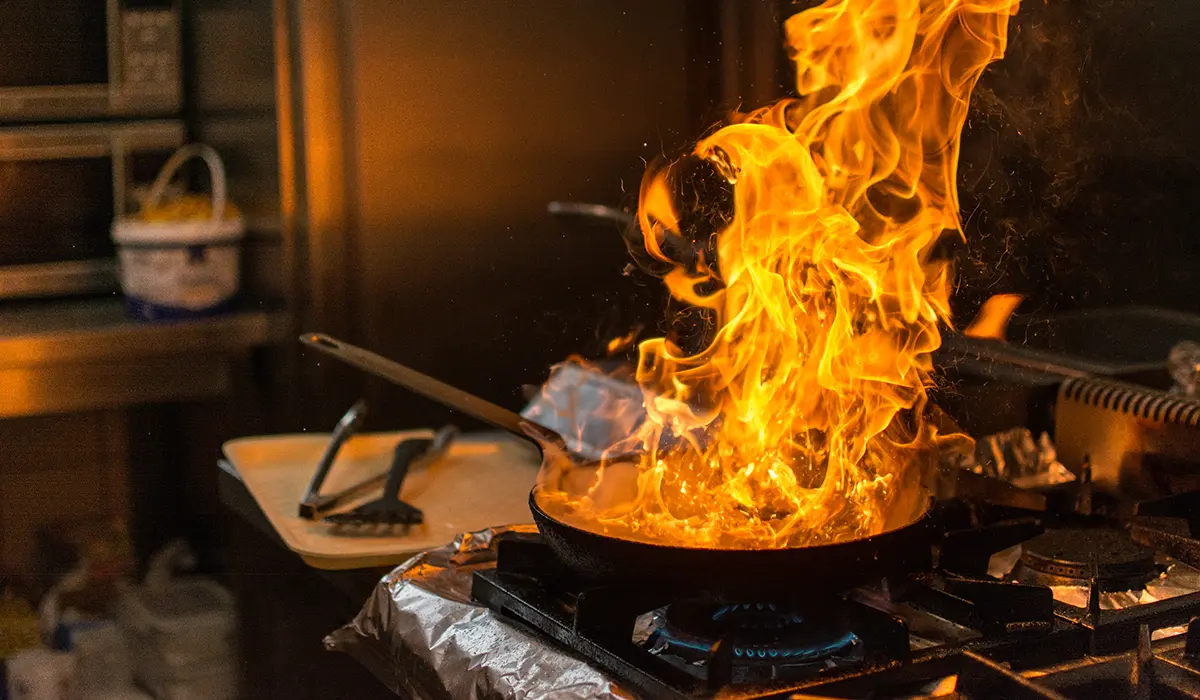Restaurant Fire Extinguisher Maintenance: What You Need to Know
When you run a restaurant, you’re juggling a thousand details — staffing, inventory, customer satisfaction, and safety. One safety detail that should never be overlooked is restaurant fire extinguisher maintenance. In a commercial kitchen, where open flames, hot oil, and electrical appliances coexist, fire risks are elevated — and so is your responsibility to be prepared.
Here, we’ll explore everything owners and managers need to know about restaurant fire extinguisher maintenance – from compliance to best practices – to help you keep your kitchen safe, compliant, and operational.
Why Restaurant Fire Extinguisher Maintenance Is Critical
Unlike offices or retail stores, restaurants are classified as high-risk environments when it comes to fire hazards. Cooking equipment, grease buildup, gas lines, and high temperatures make commercial kitchens particularly susceptible to fire incidents.
Here’s why proper extinguisher maintenance is non-negotiable:
- Quick response is crucial: Fires in kitchens can escalate within seconds. A malfunctioning or discharged extinguisher can mean the difference between a close call and a total loss.
- Legal compliance: Fire codes (NFPA 10, OSHA, and local fire marshals) require regular inspections and maintenance of fire extinguishers.
- Insurance coverage: Insurance claims related to fire damage may be denied if extinguishers weren’t properly maintained or accessible.
- Employee and customer safety: Neglecting fire safety can lead to injury, lawsuits, or worse — loss of life.
Types of Fire Extinguishers Used in Restaurants
Before diving into maintenance, it’s important to understand the types of extinguishers your restaurant likely uses:
- Class K Extinguishers: Specifically designed for cooking oils and fats. These are typically found in commercial kitchens and are vital for deep fryer-related fires.
- Class ABC Extinguishers: Versatile extinguishers used for ordinary combustibles (A), flammable liquids (B), and electrical fires (C). Often located in dining areas or hallways.
- CO₂ and Class B Extinguishers: Used in some restaurant areas to combat electrical or flammable liquid fires.
Each type has unique maintenance needs and inspection schedules, so be sure your staff knows where each one is located and what it’s designed to handle.
Monthly Fire Extinguisher Checks: A Must-Do Task
Restaurants are required to perform monthly visual inspections of all fire extinguishers. These checks can usually be done by the restaurant staff and should be logged in a fire safety checklist. Here’s what to look for:
- Accessibility: Is the extinguisher easily accessible and unobstructed?
- Physical condition: Check for dents, rust, or corrosion on the body.
- Pressure gauge: Is the needle in the green zone?
- Seal and pin: Make sure the tamper seal is intact and the pin is securely in place.
- Label legibility: Ensure operating instructions and classification labels are readable.
Document each inspection and keep records for your local fire marshal or insurance provider.
Annual Professional Inspections: Stay Compliant
According to NFPA 10, all fire extinguishers must be professionally inspected once a year. A licensed fire protection technician will:
- Check the extinguisher’s internal pressure
- Ensure that the agent inside hasn’t expired or settled
- Inspect hoses, nozzles, and handles for wear
- Verify that the extinguisher is mounted correctly and securely
After the inspection, the technician will tag each extinguisher with the inspection date and next due date. These tags serve as a legal record of compliance.
Six-Year Maintenance and Hydrostatic Testing
Fire extinguishers also require periodic deep maintenance, including:
- Six-Year Maintenance: For stored-pressure extinguishers, the unit must be emptied, internally examined, refilled, and re-pressurised every six years.
- Hydrostatic Testing: This pressure testing is required every 5 or 12 years (depending on the type of extinguisher) to ensure the cylinder can safely hold pressure.
Restaurants should work with a certified fire protection company to manage this schedule — missing one of these major maintenance milestones could leave you exposed.
Special Considerations for Grease Fires
Grease fires are especially dangerous, and Class K extinguishers are your first line of defence. However, Class K extinguishers don’t work if:
- They’re not regularly shaken (the chemical agent can settle)
- They’ve been partially discharged and not refilled
- They’re blocked, damaged, or expired
In addition, automatic hood suppression systems, which are designed to trigger when a fire breaks out under the range hood, must be inspected every six months. This system typically works in tandem with manual extinguishers, so both should be maintained in parallel.
Training Staff to Use Fire Extinguishers
Having a working extinguisher isn’t enough — your staff needs to know how to use it. At least one employee on each shift should be trained in PASS (Pull, Aim, Squeeze, Sweep) and know when not to attempt to fight a fire (i.e., if it’s spreading too fast or blocking an exit).
Regular fire drills and hands-on training (often offered by fire protection services) can reinforce this knowledge and prepare your team for real-life scenarios.
Common Fire Code Violations in Restaurants
Here are a few mistakes that can cost you during a fire inspection — or worse, during an actual fire:
- Extinguishers blocked by equipment or supplies
- Missing or illegible inspection tags
- Using the wrong type of extinguisher in a kitchen area
- Expired extinguishers or missing tamper seals
- Inadequate number or placement of extinguishers
Avoid these by conducting regular internal checks and staying in contact with your fire safety vendor.
Conclusion: Don’t Let Fire Safety Slip Through the Cracks
In a restaurant, a fire can go from small to devastating in moments. Ensuring that your fire extinguishers are properly maintained is a small task with massive impact. By staying compliant, training your staff, and working with certified professionals, you can protect your business, your team, and your customers.
Make restaurant fire extinguisher maintenance part of your safety culture — not just a checkbox on an inspection list.
For more information on Restaurant Fire Extinguisher Maintenance contact Total Safe UK.

